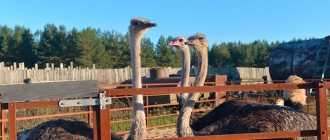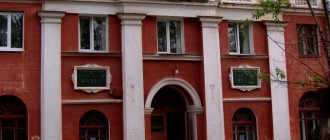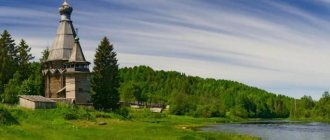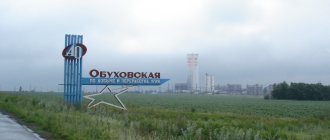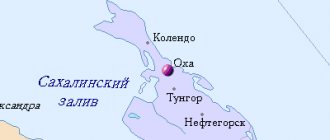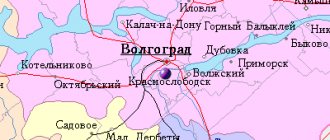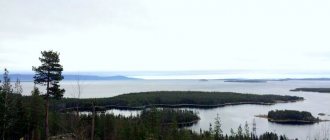Story
Perevoz settlement
arose in the second half of the 16th century as a settlement at the crossing of the Piana on the route of the Perevozsky trade route.
The first mention of this settlement in surviving sources dates back to 1593. During this period, it was a village that was part of the estate of the Nizhny Novgorod Ascension Pechersky Monastery with its center in the village of Yagodnoye. Historical coat of arms of Perevoz (1781)
In the second half of the 1630s, Perevoz became (after the construction of a temple in it) a village. It belonged to the monastery until 1764, when church property was secularized. Then it came under the jurisdiction of the Economy Collegium.
During the provincial reform of Catherine II in 1779, Perevoz was turned into a district town, and in 1798 into a provincial town. After the October Revolution, Perevoz again became a village.
In 1962, the village of Perevoz was transformed into a workers' settlement. In February 2001, by the law of the Nizhny Novgorod region, it received city status.
The city of Perevoz is the administrative center of the Perevozsky district of the Nizhny Novgorod region. Located on the Piana , 120 kilometers from Nizhny Novgorod, Perevozskaya railway station, Gorky Railway, on the Moscow-Kazan highway.
Population 9.2 thousand people.
The chronicles mention that Russian people began to settle along the banks of the Piana in the mid-14th century. Piana then served as the border of the Nizhny Novgorod-Suzdal principality.
The name of the city comes from the transportation that existed here through Piana on an important road from Nizhny Novgorod to the southeast. It is interesting that the settlement has been known since the 17th century, but even earlier the steppe in these places was called Perevoznaya. There is a well-known local legend that Ivan the Terrible Pyana with his army during his campaign against Kazan at the site of modern Perevoz, which explains the name.
The Pyanskaya crossing did not lose its importance and after the capture of Kazan by Ivan the Terrible, the banks of the river continued to be populated by Russians.
By the end of the 18th century, the population of Perevoz had become so numerous that it was given the status of a provincial town.
This is what Perevoz was like in 1865, four years after the abolition of serfdom: “... the number of inhabitants is 649 souls. Of these, 20 are burghers, 573 are state-owned peasants. All residents are Orthodox. Houses - 145 (all wooden), 16 shops, 2 stone churches, 1 school. There is no state property - factories, factories. Residents are exclusively engaged in farming and knitting nets for the Caspian fisheries. There is no fair, markets are held on Fridays...” (Semyonov P. Geographical-statistical dictionary of the Russian Empire, 1868, volume 4).
Back in March 1879, the carriers decided to build a brick factory with a capacity of 250 thousand bricks per season. In the 30s of the 20th century, production increased significantly, and tiles from the Perevoz Brick Factory were mainly exported to Czechoslovakia.
The impetus for the active socio-economic development of Perevoz and the surrounding villages was the creation of the Perevozsky district .
In 1960-1980, large housing construction was carried out Perevoz
Many industrial enterprises of the regional center reached a high level of development in those years: a flax spinning and weaving factory, agricultural machinery, an intercollective farm construction organization, a road mobile mechanized column, a road repair and construction site, a drying plant, an integrated design department, a repair and construction site, a housing repair and construction site , consumer services plant.
In May 1962, the village of Perevoz was transformed into a workers' settlement, and in 2001 - into a city.
Piana River near Perevoz has been artificially straightened, and 200 meters above the bridge there is a riffle used for water tourism competitions.
According to the “State List of Historical and Cultural Monuments of the Nizhny Novgorod Region,” in Perevoz there is a monument of urban planning and architecture - a church (the dating of the object is the beginning of the 19th century). The “Address-calendar of the Nizhny Novgorod Diocese” for 1904 contains information about two places of worship in the provincial town of Perevoz : a stone church erected in 1810 in honor of the Nativity of Christ , and a warm stone church erected in 1816 in honor of the Intercession of the Mother of God . The latter is probably included in the “Lists” of monuments.
Among the civil architecture buildings in Perevoz one can highlight the Konkov House .
Telephone code: +7 83148 Unofficial city website: www.ourperevoz.ucoz.ru
Pedigree of the small homeland
The village of Perevoz, the center of the Perevoz rural district.
The distance to the center of the district (the city of Nolinsk) is 5 kilometers, the date of foundation is 1600, former names: High Veretya, Sukhaya Veretya. The word “veretye” means “field on a hill.”
It was located on a mountain between two forests and was part of the Puginsky volost of the Pautovsky society. Along the bank of the Voya River there was a road connecting the city of Vyatka with the districts, and went further to Kazan (Kazansky tract). In the 18th century, one tenant built a large raft and arranged a crossing, transportation across the Voya, erected a residential building, and later his brothers joined him. On May 22, 1845, there was a fire and the village of Vysokaya Veretya burned down. The fire victims began to build houses on the banks of the Voya, placing the houses in one line along the highway, the village began to be called Perevoz. According to the 1855 census, there were 45 households here, 30 years later there were 444 residents.
The main occupation of peasants is agriculture; handicraft production was developed: pottery, felting, weaving bast shoes; there were 10 forges, the mill, according to legend, was built during the time of Catherine the Second, a state-owned one, it was used by the Churakovsky distillery (burned down in the 70s), belonged to two companies (Perevoz and B. Khlyupino); They were engaged in carting: they took Nolinsk merchants to sell goods, went to Solikamsk for salt, to Astrakhan for fish. Every year a big holiday was celebrated in the spring. There was a service in the Church of St. Nicholas the Wonderworker, and a lot of people gathered. The villagers lived poorly; begging was one of their livelihoods.
According to the 1926 population census, there were 459 people in the village (95 farms), on the territory of the district there were 36 villages that were also collective farms: Klyuchi (collective farm "Red Klyuch"), Sredneye ("Serednyak"), Churakovo ("Nachalo") , Flour (named after Kalinin), Sosnino ("Red Hill"), Gonba ("Handicraft"), Shangi ("Kremlinskaya"), Zakhvatai (named after Gorky), Ananyevshchina ("Spotlight"), Kurbaty ("Change") , Horse ("Red Navy") and others. The village of Perevoz became the central estate of the Udarnik collective farm. Hero of Socialist Labor A, F, Kultysheva, I. A. Koshcheev, E, M, Rubtsova, P. I, Koshcheev glorified their collective farm, their small homeland, became heroes in their land. In 1967, the Udarnik collective farm was awarded a memorial banner for its services in agricultural production.
(Three centuries of High Veretia: (Gazette issue dedicated to the rural district) // Sel. new. Nolinsk, 1999. March 4.)
(Encyclopedia of the Vyatka Land, Volume 1, Book 2, Villages, Villages. 2002).
Perevoz village, Rzhaksinsky district
We woke up early in the morning in one of the first settlements on Rzhaksinskaya land. Already at breakfast it was impossible not to notice the magnificent view from the window - snowy expanses, the Vorona River, a pine forest. We wanted to quickly see the full picture of this splendor and carefully study the area, so, despite not the best weather conditions, we went for a walk.
1. Typical courtyard. On the left you can see a tractor - a necessary helper, because the residents themselves clear the streets of snow here, and they do it very conscientiously.
2. Villagers and summer residents live among such beauty. In winter, this beauty is more restrained, but can you imagine what this ensemble looks like in summer? Here you not only breathe easier, but also think better.
3. The locals came out to meet each other. “Who are you?”
4. Dogs, as usual, are of two types - some of them break while you are within a radius of 10 meters from their security point. Others sincerely rejoice at you and accompany you on your journey. We were lucky - the dogs not only accompanied us, but also willingly posed.
5. In the background is the Vorona River.
6. The river divides the village into 2 parts; in the area of the bridge it rarely freezes.
7. Peace and tranquility. During the walk we met 6 people and 5 cars.
8. And there is no hurry here.
9. The decoration of the houses is rather restrained. In addition, as someone who likes to take pictures of houses, I was greatly disturbed by the gas pipes that are laid right in front of the houses, almost adjacent to the facades and “cutting off” the view from the windows.
10. Another “friend”. What's a long shot without a twist in the image of a beautiful dog?
11. But there are very elegant pipes.
12. And no one canceled fantasy.
13. Old floral frames.
14. Interesting fence with “eyes”.
15. And here is the pearl of our walk. An old school building with a rich history.
16. In 1934, the building was converted into a school from ... a church (Temple with a Throne in honor of the Archangel Michael), with the consent of the believers.
17. During the Great Patriotic War, there was also an evacuation point for children here.
18. A lot of effort and energy was invested by teachers and students in the arrangement of the school. However, the building has been empty for 8 years now... The new generation is being educated and educated in the neighboring village of Bolshaya Rzhaksa.
19. The ancient building is proposed by the District Administration for the organization of a hotel or recreation center.
20. On this ambiguous note we ended the walk, which was the first, but not the last in the village of Perevoz.
Share link:
- Click to share on Twitter (Opens in new window)
- Click here to share content on Facebook. (Opens in a new window)
